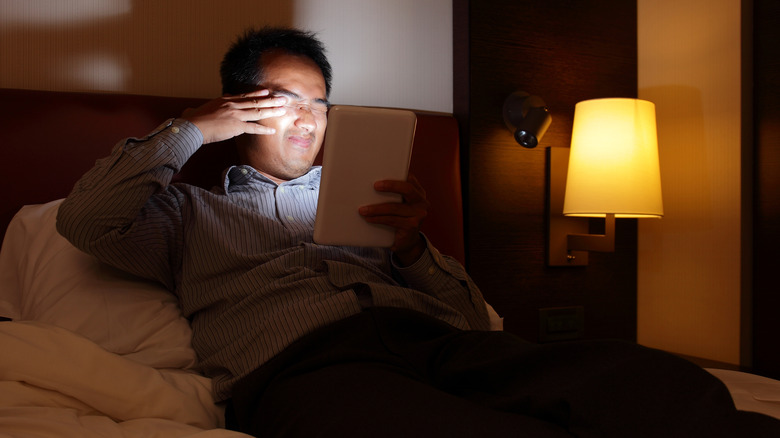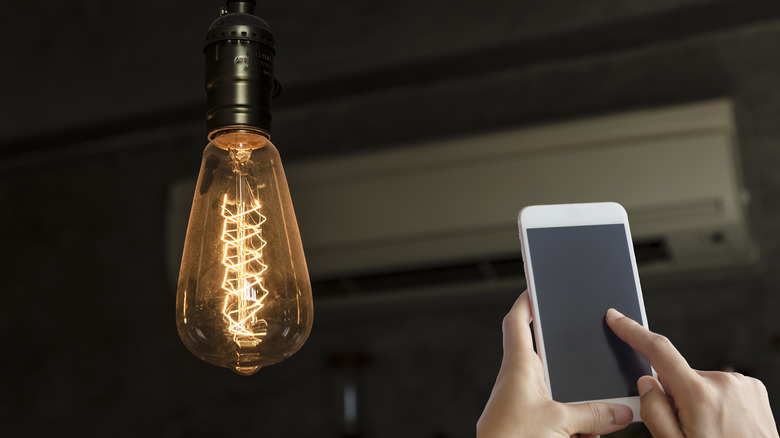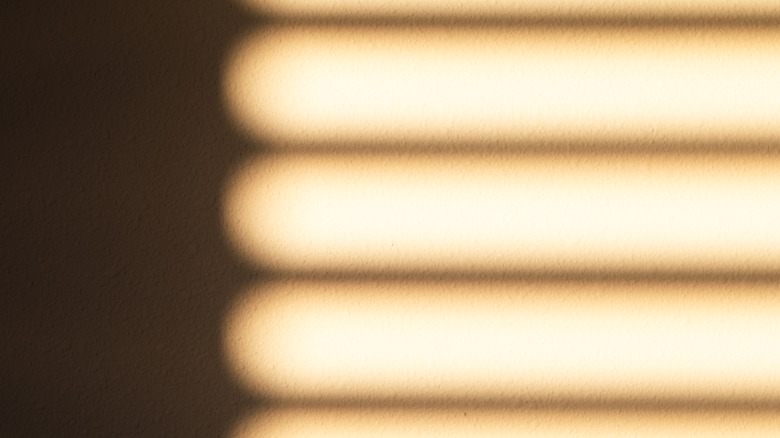This Simple Trick Makes It Easier To Spot Pesky Lighting Problems
If you often get a headache near computer screens, in commercial buildings, or even at home, it could mean that you're sensitive to flickering lights. LED lightbulbs are some of the worst offenders when it comes to this. LED stands for light-emitting diodes, meaning the electrical current flows in one direction. Because they are only illuminated about ten times per second, they emit a pulse that is sometimes noticeable to the naked eye, but not always. Although they are very energy efficient, LEDs can put a strain on your eyes and negatively affect your circadian rhythm (via Harvard Health). For this reason, it's important to locate flickering lights in your home and replace them with more stable, warm light sources or at least avoid using them at night.
Of course, most people don't use LEDs throughout their entire home, but other kinds of lightbulbs can flicker as well. Still, if you can't see them, how can you tell if your lights are secretly bothering your eyes or affecting your sleep? Image technology experts at Red Shark have a simple trick they use to determine if a light is flickering or not. To use this handy hack, all you'll need is a cellphone camera.
Capture a photo
According to Sciencing, some people are more sensitive to flickering lights than others. Fluorescent lights and computer screens, in particular, are known to cause eye strain, discomfort, and even migraines in sensitive people. If you've ever taken a photo of your LCD computer screen, you've probably noticed an odd striping effect. This is because the backlight of your computer screen actually flickers at a fast rate. You can test other light sources in your home by taking photos of them as well. To do this, open your smartphone's camera app and point the rear-facing camera directly at the bulb, then snap a photo.
Professional photographers and videographers often test bulbs this way because flickering lights can affect how their subjects appear. From the experts at Red Shark we learn that the key to this hack is putting your phone camera right up against the light source. The camera will adjust its shutter speed to be much quicker, reducing the amount of light that passes through the lens. A faster shutter speed means that there's just a split second to capture the photo, which will allow you to stop those pesky pulses dead in their tracks!
Diagnose your results
Now, you may be wondering what exactly you're looking at here. If you've captured the photo correctly, you'll see a white field or a blurry image, but look closely. Lights that flicker will have some distinct dark lines passing through the photo. These lines are actually breaks in the pulses of electricity flowing through your light source. If you don't notice any dark or bluish-yellow lines passing through the frame, your bulbs are most likely very stable. Red Shark explains that some electronics do a better job of continuously lighting the bulbs than others, meaning they won't hurt your eyes or affect photo and video quality.
If you've identified some flickering lights in precarious locations, like the lamp on your nightstand, for example, you may want to consider replacing the bulbs. One great thing about this smartphone hack is that you can take it anywhere, so bring your smartphone to your local hardware store and snap photos of the sample bulbs before you settle on which one to buy; this will help you limit the number of harmful lights in your home. Sure, you may feel silly taking photos in the lighting aisle, but you'll sleep better at night knowing your lights are healthier for you!


